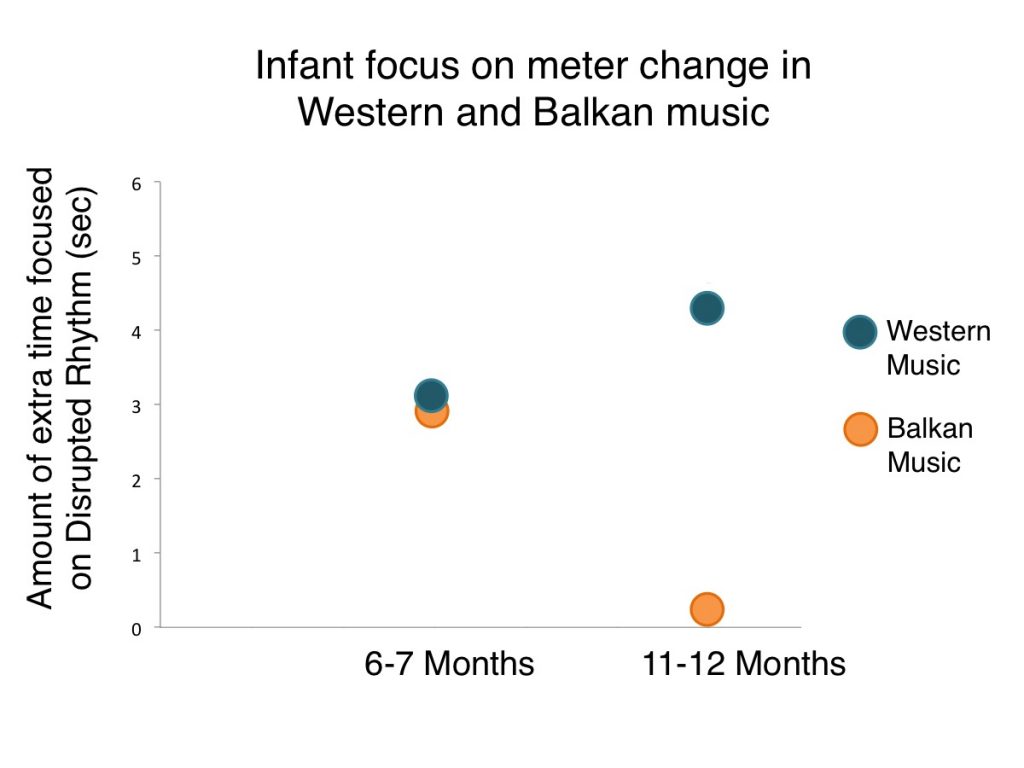
Can children tell the difference between these two types of meter? To explore this question, researchers studied children’s responses as they listened to simple melodies.
In the first part of the study, infants who were raised in North America listened to melodies. The melodies were in either a Western duple meter, or a Balkan septuple meter. In the next part of the study, they listened to several new melodies. Some of the new melodies used the same meter they heard during the first part, but in others, the meter changed in the middle of the melody.
At around six months old, Western infants could tell when the meter changed in Western music, as well as in Balkan music. Look at the leftmost dots on the graph. For both types of music, children spent extra time focusing on the melodies with meters that changed. This suggests they could tell there was a change in meter.
But by the time Western children were a year old, they could only tell when the meter changed in Western music. They were no longer able to notice changes in the Balkan melody with the foreign meter. The rightmost yellow dot shows that children spent no extra time focusing on Balkan melodies with changed meter. The blue dot shows children spent even more time focusing on Western melodies with changed meter.
-
- Beat
- the regular pulse of music
- Electroencephalography (EEG)
- a non-invasive method used to measure electrical activity in the brain
- Executive function
- a set of mental abilities that help us focus attention, remember information, and switch between tasks
- Magnetoencephalography (MEG)
- a non-invasive brain imaging technique used to determine which regions of the brain are active
- Meter
- a grouping of beats with specific patterns
- Neuroplasticity
- the ability to change how neurons in our brain are connected to each other
- Pitch
- the measure of how high or low we perceive sounds to be
- Pro-social behavior
- actions that are intended to help others
- Synchronized movement
- movements that occur in sync with musical beats and, or with other people
- Timbre
- the quality of a musical sound or voice that allows us to tell the differences between instruments or voices